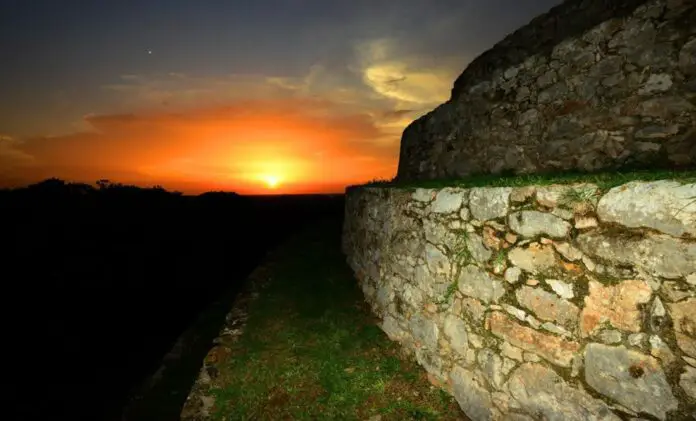The pyramids of Itzamatul, Habuc, Tu’ul and Chaltún Ha, are the four pre-Hispanic architectural complexes in Izamal, Yucatán that will open to public visits with free access, starting tomorrow, Thursday, December 7 during a Monday visit schedule to Sunday, from 8:00 a.m. to 5:00 p.m., as reported by the National Institute of Anthropology and History (INAH), and the Izamal City Council.
These pre-Hispanic complexes will be added to the basement known as Kinich Kak Moo – relevant for its solar symbolism and being one of the largest in terms of volume in all of Mesoamerica, after the pyramids of Teotihuacan and Cholula – which was open since the end of the health contingency due to COVID-19.
These five spaces, often referred to as archaeological zones, are actually part of the same ancient settlement that, with the arrival of the Spanish and the historical development of Izamal, gradually fragmented, says researcher at the INAH Yucatán Center, Rafael Burgos Villanueva.
“The INAH has registered more than 170 pre-Hispanic structures within the urban area of Izamal, which, as happens in other places in Mexico, coexist with viceregal and contemporary elements, hence it is known as ‘The city of the three cultures.’ ‘”, adds the co-director of the Izamal Project, which he develops together with the archaeologists Luis Millet Cámara and Yoly Palomo Carrillo.
The researcher affirms that Izamal has a long development sequence. “Its peak is located towards the end of the Protoclassic period (150 BC-250 AD) and during the Early Classic period (250-600 AD), times in which the most important buildings were erected, as well as an extensive network of roads that They reflect its political and economic importance.”
Izamal, which means “dew that falls from the sky”, in honor of the great Mayan priest Zama, founder of the city, supreme creator of all things, was a ceremonial civic center and one of the largest in the lowlands of the Mayan area. Since its buildings together exceed one million cubic meters, Izamal has a long sequence of development, with more than two thousand five hundred years of occupation.
Along with the opening of the pre-Hispanic Mayan vestiges, in Izamal you can also visit the former Franciscan convent of San Antonio de Padua, the viceregal site that is traditionally attended every December 8, the day on which the Catholic religion celebrates Mary, in her dedication to the Virgin of the Immaculate Conception, queen and patron saint of Yucatán.
This religious site painted golden yellow, like almost the entire town of Izamal, has received the nickname The Yellow City. It is a magical town with great colonial charm.
Visiting hours for the five pre-Hispanic architectural complexes are Monday to Sunday, from 8:00 a.m. to 5:00 p.m., with free access for tourists.
.
Source: El Universal







